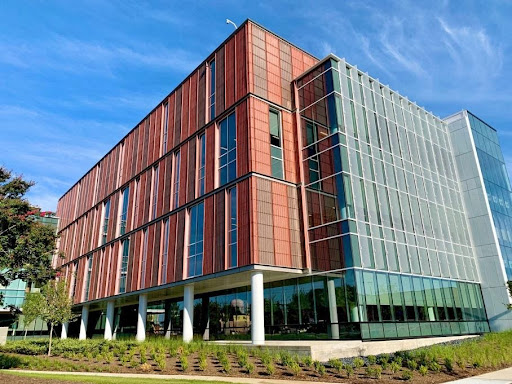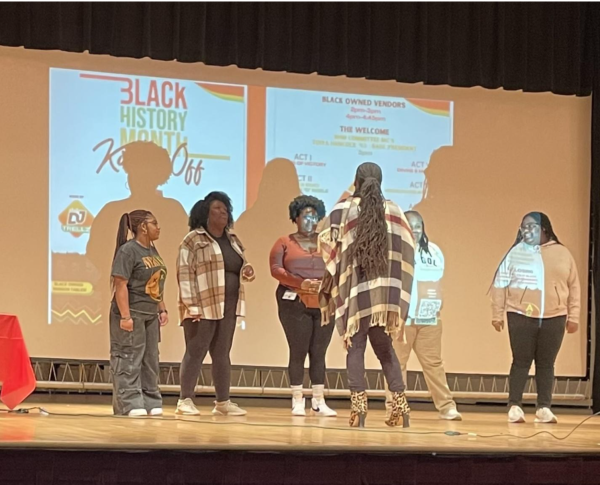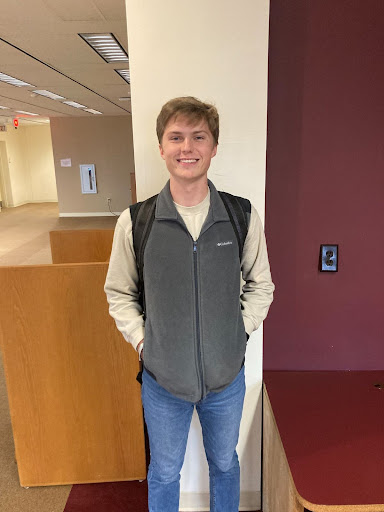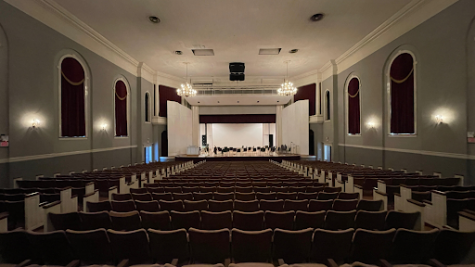Investing in the future: Educational infrastructure
Greensboro, North Carolina is a hub for higher education. With over eight colleges and universities in the Triad, our community features state-of-the-art research infrastructure and instructional facilities. Investing in labs and well-equipped classrooms allows students to participate in research that builds critical thinking skills and confidence—in turn, developing a workforce for the future: individuals who may lead the next mission to Mars, or even discover a cure for cancer!
Recently, North Carolina A&T State University (N.C. A&T) invested $90 million in the Harold L. Martin, Sr., Engineering Research and Innovation Complex (Martin Complex), which was made possible by the Connect N.C. Bond. Situated at the intersection of North Dudley Street and East Market Street, the Martin Complex features a large classroom, makerspace, multiple lab facilities, and two high bay areas.
Covered in glazed windows, steel architecture, and vibrant red-brown paneling, the Martin Complex embraces collaborations with the community, ranging from K-12 education to the Greensboro Chamber of Commerce. College of Engineering Dean Robin Coger, PhD., describes the Martin Complex as “a facility that encourages collaborations across researchers and allows students and visitors to get a glimpse of the exciting research work ongoing here at North Carolina A&T.”
Through the new complex, N.C. A&T plans to further expand important partnerships for cutting-edge research and education activities, in addition to strengthening collaborations with companies and other universities. Research within the Martin Complex is focused on critical fields including cybersecurity and healthcare applications, thus allowing researchers to stay ahead of the curve.
“Innovation happens at the intersection of our fields, and it is powered by conversations and collaborations,” Coger explained. “The open spaces integral to the Martin Complex encourage those conversations… while the makerspaces help our students build their muscle of innovation.”
In order to foster creative minds within a tech-savvy generation, colleges, including Guilford, have begun implementing open workspaces similar those featured in the Martin Complex. As Suzanne Bartels, Director of Hege Library and Learning Technologies, supports, having common work areas—with monitors and high-definition audio/video systems—helps promote collaboration among students.
Most importantly, as Bartels said, the transformation of the traditional Hege Library at Guilford College into a collaborative learning environment requires “student engagement in the planning and visioning efforts.” The implementation of collaborative workspaces allow open communication among students—and faculty—which is crucial in developing healthy relationships and creating pioneers of the future.
Here on our campus, Guilford students have the opportunity to participate in the Guilford Undergraduate Symposium (GUS), Integrated Research Lab in the chemistry department, and collaborate with each other within the Hege Academic Commons. Through these programs, students receive hands-on experience with equipment and training skills that prepare them for future endeavors—whether it be a job, internship, or postgraduate degree. In addition, as Bartels explained, the Hege Academic Commons offers students academic and career-planning options through the Guided Discovery, in addition to supporting innovation and creativity through open collaborative spaces.
At Guilford College, professors focus on providing students with access to equipment and lab infrastructure at an early level, developing and teaching vital research skills. “In the Chemistry Department, we have a variety of spectrometers… we have a GC mass spectrometer, fluorescence spectrometry… and liquid chromatography,” explained Guilford College Professor of Chemistry Rob Whitnell.
Whitnell, who conducts research in chemical education, prepares his students for the professional world by teaching them how to operate equipment and understand the basic principles of research at an early stage of their college experience. He asserts that the ability to have a close interaction with students builds their confidence and, “opens new avenues in the future.”
Investing in our next generation is not only limited to materialistic infrastructure, but also encompasses a personal connection. David Hildreth, Guilford College Lincoln Financial Professor of Education Studies, highlights the importance of mentorship and a personal connection within the classroom.
Hildreth, who focuses on scientific pedagogy, asserts that nurturing curiosity from a young age is vital to garner interest in using new technologies and making new discoveries and innovations. “Unless you have (individuals) who care about (science), who are inquisitive, who question and wonder, it is hard to engage students,” Hildreth said.
Additionally, other colleges including Alamance Community College (ACC) and Guilford Technical Community College (GTCC) have invested millions of dollars into new center infrastructure. In May 2021, ACC announced the construction of a $17.6 million Biotechnology Center of Excellence facility. Similarly, in 2019, GTCC invested $35.54 million in the Center of Advanced Manufacturing and contributed $1 billion to the Guilford County economy in 2017-18.
The Martin Complex and Academic Commons signify adaptability to the needs of a new generation: equipped with emerging technologies and collaborative spaces. Infrastructure funding has been and should continue to be supported by the community through approvals of voting bills, and monetary donations. Ultimately, investing in state-of-the-art facilities and community engagement will help develop future leaders, investigators and innovators.








